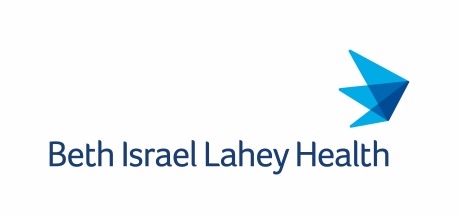Newswise — BOSTON — A pioneer in developing life-saving therapies for a deadly heart arrhythmia has called on electrophysiologists to reexamine a widely used technique to guide the treatment of the faulty electrical impulses responsible for these abnormal heartbeats.
Writing in JACC: Clinical Electrophysiology, a publication of the American College of Cardiology, Mark E. Josephson, MD, a world-renowned electrophysiologist at the CardioVascular Institute at Beth Israel Deaconess Medical Center and director of the Harvard-Thorndike Electrophysiology Institute and Arrhythmia Service, proposes that this technology, known as substrate mapping, continue to be refined and standardized when used in the treatment of ventricular tachycardia (VT). VT is a particularly dangerous heart arrhythmia that affects the heart’s lower chambers and often leads to cardiac arrest or sudden death.
Electrophysiologists use substrate mapping to guide them when performing catheter ablations for VT—procedures in which radiofrequency energy is applied to the diseased heart muscle (the substrate) to correct arrhythmias. Narrow tubes, or catheters, are threaded into the heart through an artery and sensors then trace the flow of electricity through the heart yielding both an on-screen image and an electrical signal to reveal the location of both normal circuits and faulty circuits targeted for ablation.
Unfortunately, says Josephson, who also serves as cardiology chief emeritus at BIDMC and Professor of Medicine at Harvard Medical School, the effectiveness of catheter ablation procedures for VT is often only temporary. “Despite acute success,” he wrote, “the recurrence rate of tachycardia at one year remains unacceptably high, ranging from 50 percent to 60 percent.”
Improved Interpretation of Heart- Mapping Methods
Josephson says these poor outcomes are often linked to common misconceptions surrounding standard mapping procedures, including the relevance of heart muscle scars caused by heart attacks. As Josephson writes, it has been widely assumed that these scars are responsible for the faulty electrical circuit that causes VT.
However, new technology which Josephson helped develop has shown that “Just because you have a scar doesn’t mean you have an electrical circuit ready to create VT,” Josephson said. “The scar only forms a barrier between the catheter and viable muscle, which may or may not participate in generating VT. Low voltage signals recorded with standard catheters do not always mean that the tissue is dead.” What the doctor sees depends on many factors, including the catheter tip electrode size, the distance between the recording electrodes, the angle and contact of the catheter with the tissue, and the direction that the underlying tissue is activated, according to Josephson. All of these factors need to be considered when interpreting electrical signal amplitude and shape.
Advances Continue in the Field of Electrophysiology
Josephson’s insights carry particular weight. In 1977, he was the first physician-scientist to map a ventricular tachycardia, using comparatively limited mapping tools. For this groundbreaking work and more than 500 studies published in peer-reviewed journals, as well as his authorship of the standard textbook in the field, he became known as one of the “fathers of modern electrophysiology.”
In the 1990s, Josephson participated in the development of the sophisticated 3D mapping techniques that revolutionized the field. More recently, he and fellow CVI electrophysiologist Elad Anter, MD, co-author of the new JACC: Clinical Electrophysiology article, helped develop another generation of mapping technology. The new system, introduced in 2014, uses many more, very small, close-together electrodes to record electrical signals, resulting more quickly in images with vastly improved resolution.
Josephson and Anter have now called on electrophysiologists to continue perfecting mapping technology, and to standardize their mapping practices. In addition, they envision a day when extremely high resolution magnetic resonance imaging (MRI) may improve understanding of the VT substrate and play a role in identifying patients who are at risk for VT.
“Hopefully these changes will significantly improve our understanding of the arrhythmogenic (abnormality-producing) substrate,” they write, “and improve the results of VT ablation.”
About the CardioVascular Institute at Beth Israel Deaconess Medical Center
The CardioVascular Institute (CVI) at Beth Israel Deaconess Medical Center combines cardiology, cardiac surgery and vascular surgery to provide comprehensive, patient-centered care across disciplines. The CVI delivers outstanding outcomes, easy access and compassionate care. Community-based cardiologists and vascular surgeons at convenient offices throughout Eastern Massachusetts provide a wide range of services and, when advanced care is needed, refer patients to Beth Israel Deaconess Medical Center in Boston. For more information, visit www.bidmc.org/cvi.
About Beth Israel Deaconess Medical Center
Beth Israel Deaconess Medical Center is a patient care, teaching and research affiliate of Harvard Medical School and consistently ranks as a national leader among independent hospitals in National Institutes of Health funding.BIDMC is in the community with Beth Israel Deaconess Hospital-Milton, Beth Israel Deaconess Hospital-Needham, Beth Israel Deaconess Hospital-Plymouth, Anna Jaques Hospital, Cambridge Health Alliance, Lawrence General Hospital, Signature Healthcare, Beth Israel Deaconess HealthCare, Community Care Alliance and Atrius Health. BIDMC is also clinically affiliated with the Joslin Diabetes Center and Hebrew Rehabilitation Center and is a research partner of Dana-Farber/Harvard Cancer Center and the Jackson Laboratory. BIDMC is the official hospital of the Boston Red Sox. For more information, visit www.bidmc.org.
MEDIA CONTACT
Register for reporter access to contact detailsCITATIONS
JACC: Clinical Electrophysiology
